- Home
- Stephen Hawking
Brief Answers to the Big Questions
Brief Answers to the Big Questions Read online
Copyright © 2018 by Spacetime Publications Limited
Foreword copyright © 2018 by Eddie Redmayne
Introduction copyright © 2018 by Kip Thorne
Afterword copyright © 2018 by Lucy Hawking
All rights reserved.
Published in the United States by Bantam Books, an imprint of Random House, a division of Penguin Random House LLC, New York.
BANTAM BOOKS and the HOUSE colophon are registered trademarks of Penguin Random House LLC.
Published in the United Kingdom by John Murray (Publishers), a Hachette UK Company.
Photograph of the adult Stephen Hawking © Andre Pattenden
Hardback ISBN 9781984819192
Ebook ISBN 9781984819208
randomhousebooks.com
Text design by Craig Burgess, adapted for ebook
Cover design: Dan Rembert
Cover image: © Shutterstock
v5.3.2
ep
Contents
Cover
Title Page
Copyright
A Note from the Publisher
Foreword: Eddie Redmayne
An Introduction: Kip Thorne
Why We Must Ask the Big Questions
Chapter 1: Is There a God?
Chapter 2: How Did It All Begin?
Chapter 3: Is There Other Intelligent Life in the Universe?
Chapter 4: Can We Predict the Future?
Chapter 5: What Is Inside a Black Hole?
Chapter 6: Is Time Travel Possible?
Chapter 7: Will We Survive on Earth?
Chapter 8: Should We Colonise Space?
Chapter 9: Will Artificial Intelligence Outsmart Us?
Chapter 10: How Do We Shape the Future?
Afterword: Lucy Hawking
Acknowledgements
By Stephen Hawking
About the Author
A Note from the Publisher
Stephen Hawking was regularly asked for his thoughts on the “big questions” of the day by scientists, tech entrepreneurs, senior business figures, political leaders and the general public. Stephen maintained an enormous personal archive of his responses, which took the form of speeches, interviews and essays.
This book draws from this personal archive and was in development at the time of his death. It has been completed in collaboration with his academic colleagues, his family and the Stephen Hawking Estate.
A percentage of the royalties will go to the Motor Neurone Disease Association and the Stephen Hawking Foundation.
Foreword
Eddie Redmayne
The first time I met Stephen Hawking, I was struck by his extraordinary power and his vulnerability. The determined look in his eyes coupled with the immobile body was familiar to me from my research—I had recently been engaged to play the role of Stephen in The Theory of Everything and had spent several months studying his work and the nature of his disability, attempting to understand how to use my body to express the passage of motor neurone disease over time.
And yet when I finally met Stephen, the icon, this scientist of phenomenal talent, whose main communication was through a computerised voice along with a pair of exceptionally expressive eyebrows, I was floored. I tend to get nervous in silences and talk too much whereas Stephen absolutely understood the power of silence, the power of feeling like you are being scrutinised. Flustered, I chose to talk to him about how our birthdays were only days apart, putting us in the same zodiacal sign. After a few minutes Stephen replied, “I’m an astronomer. Not an astrologer.” He also insisted that I call him Stephen and stop referring to him as Professor. I had been told…
The opportunity to portray Stephen was an extraordinary one. I was drawn to the role because of the duality of Stephen’s external triumph in his scientific work and the internal battle against motor neurone disease starting in his early twenties. His was a unique, complex, rich story of human endeavour, family life, huge academic achievement and sheer defiance in the face of all obstacles. While we wanted to portray the inspiration, we also wanted to show the grit and courage involved in Stephen’s life, displayed both by him and by those who cared for him.
But it was equally important to portray that side of Stephen which was pure showman. In my trailer I ended up having three images that I referred to. One was Einstein with his tongue out, because there’s that similar playful wit with Hawking. Another was the Joker in a pack of cards who’s a puppeteer, because I feel Stephen always had people in the palm of his hand. And the third was James Dean. And that was what I gained from seeing him—the glint and the humour.
The greatest pressure in playing a living person is that you will have to account for your performance to the person you have portrayed. In Stephen’s case, the accounting was also to his family, who had been so generous to me during my preparation for the film. Before Stephen went into the screening, he said to me, “I will tell you what I think. Good. Or otherwise.” I replied that if it was “otherwise” perhaps he could just say “otherwise” and spare me the excoriating details. Generously, Stephen said he had enjoyed the film. He was moved by it, but famously he also stated that he thought there should have been more physics and fewer feelings. This is impossible to argue with.
Since The Theory of Everything, I have stayed in contact with the Hawking family. I was touched to be asked to give a reading at Stephen’s funeral. It was an incredibly sad but brilliant day, full of love and joyful memories and reflections on this most courageous of men, who had led the world in his science and in his quest to have disabled people recognised and given proper opportunities to thrive.
We have lost a truly beautiful mind, an astonishing scientist and the funniest man I have ever had the pleasure to meet. But as his family said at the time of Stephen’s death, his work and legacy will live on and so it is with sadness but also great pleasure that I introduce you to this collection of Stephen’s writings on diverse and fascinating topics. I hope you enjoy his writings and, to quote Barack Obama, I hope Stephen is having fun up there among the stars.
Love
Eddie
An Introduction
Professor Kip S. Thorne
I first met Stephen Hawking in July 1965, in London, England, at a Conference on General Relativity and Gravitation. Stephen was in the midst of his PhD studies at the University of Cambridge; I had just completed mine at Princeton University. Rumours swirled around the conference halls that Stephen had devised a compelling argument that our universe must have been born at some finite time in the past. It cannot be infinitely old.
So, along with some 100 people, I squeezed into a room designed for forty, to hear Stephen speak. He walked with a cane and his speech was a bit slurred, but otherwise he showed only modest signs of the motor neurone disease with which he had been diagnosed just two years earlier. His mind was clearly unaffected. His lucid reasoning relied on Einstein’s general relativity equations, and on astronomers’ observations that our universe is expanding, and on a few simple assumptions that seemed very likely to be true, and it made use of some new mathematical techniques that Roger Penrose had recently devised. Combining all these in ways that were clever, powerful and compelling, Stephen deduced his result: our universe must have begun in some sort of singular state, roughly ten billion years ago. (Over the next decade, Stephen and Roger, combining forces, would go on to prove, ever more convincingly, this singular beginning of time, and also prove ever more convincingly that the core of every black hole is inhabited by a singularity where time ends.)
I emerged from Stephen’s 1965 lecture tremendously impressed. Not
just by his argument and conclusion, but more importantly by his insightfulness and creativity. So I sought him out and spent an hour talking privately with him. That was the beginning of a lifelong friendship, a friendship based not just on common science interests, but on a remarkable mutual sympathy, an uncanny ability to understand each other as human beings. Soon we were spending more time talking about our lives, our loves, and even death than about science, though our science was still much of the glue that bound us together.
In September 1973 I took Stephen and his wife Jane to Moscow, Russia. Despite the raging Cold War, I had been spending a month or so in Moscow every other year since 1968, collaborating on research with members of a group led by Yakov Borisovich Zel’dovich. Zel’dovich was a superb astrophysicist, and also a father of the Soviet hydrogen bomb. Because of his nuclear secrets, he was forbidden to travel to Western Europe or America. He craved discussions with Stephen; he could not come to Stephen; so we went to him.
In Moscow, Stephen wowed Zel’dovich and hundreds of other scientists with his insights, and in return Stephen learned a thing or two from Zel’dovich. Most memorable was an afternoon that Stephen and I spent with Zel’dovich and his PhD student Alexei Starobinsky in Stephen’s room in the Rossiya Hotel. Zel’dovich explained in intuitive ways a remarkable discovery they had made, and Starobinsky explained it mathematically.
To make a black hole spin requires energy. We already knew that. A black hole, they explained, can use its spin energy to create particles, and the particles will fly away carrying the spin energy with them. This was new and surprising—but not terribly surprising. When an object has energy of motion, nature usually finds a way to extract it. We already knew other ways of extracting a black hole’s spin energy; this was just a new, though unexpected way.
Now, the great value of conversations like this is that they can trigger new directions of thought. And so it was with Stephen. He mulled over the Zel’dovich/Starobinsky discovery for several months, looking at it first from one direction and then from another, until one day it triggered a truly radical insight in Stephen’s mind: after a black hole stops spinning, the hole can still emit particles. It can radiate—and it radiates as though the black hole was hot, like the Sun, though not very hot, just mildly warm. The heavier the hole, the lower its temperature. A hole that weighs as much as the Sun has a temperature of 0.00000006 Kelvin, 0.06 millionths of a degree above absolute zero. The formula for calculating this temperature is now engraved on Stephen’s headstone in Westminster Abbey in London, where his ashes reside between those of Isaac Newton and Charles Darwin.
This “Hawking temperature” of a black hole and its “Hawking radiation” (as they came to be called) were truly radical—perhaps the most radical theoretical physics discovery in the second half of the twentieth century. They opened our eyes to profound connections between general relativity (black holes), thermodynamics (the physics of heat) and quantum physics (the creation of particles where before there were none). For example, they led Stephen to prove that a black hole has entropy, which means that somewhere inside or around the black hole there is enormous randomness. He deduced that the amount of entropy (the logarithm of the hole’s amount of randomness) is proportional to the hole’s surface area. His formula for the entropy is engraved on Stephen’s memorial stone at Gonville and Caius College in Cambridge, where he worked.
For the past forty-five years, Stephen and hundreds of other physicists have struggled to understand the precise nature of a black hole’s randomness. It is a question that keeps on generating new insights about the marriage of quantum theory with general relativity—that is, about the ill-understood laws of quantum gravity.
In autumn 1974 Stephen brought his PhD students and his family (his wife Jane and their two children Robert and Lucy) to Pasadena, California for a year, so that he and his students could participate in the intellectual life of my university, Caltech, and merge, temporarily, with my own research group. It was a glorious year, at the pinnacle of what came to be called “the golden age of black hole research.”
During that year, Stephen and his students and some of mine struggled to understand black holes more deeply, as did I to some degree. But Stephen’s presence, and his leadership in our joint group’s black hole research, gave me freedom to pursue a new direction that I had been contemplating for some years: gravitational waves.
There are only two types of waves that can travel across the universe bringing us information about things far away: electromagnetic waves (which include light, X-rays, gamma rays, microwaves, radio waves…); and gravitational waves.
Electromagnetic waves consist of oscillating electric and magnetic forces that travel at light speed. When they impinge on charged particles, such as the electrons in a radio or TV antenna, they shake the particles back and forth, depositing in the particles the information the waves carry. That information can then be amplified and fed into a loudspeaker or on to a TV screen for humans to comprehend.
Gravitational waves, according to Einstein, consist of an oscillatory space warp: an oscillating stretch and squeeze of space. In 1972 Rainer (Rai) Weiss at the Massachusetts Institute of Technology had invented a gravitational-wave detector, in which mirrors hanging inside the corner and ends of an L-shaped vacuum pipe are pushed apart along one leg of the L by the stretch of space, and pushed together along the other leg by the squeeze of space. Rai proposed using laser beams to measure the oscillating pattern of this stretch and squeeze. The laser light could extract a gravitational wave’s information, and the signal could then be amplified and fed into a computer for human comprehension.
The study of the universe with electromagnetic telescopes (electromagnetic astronomy) was initiated by Galileo, when he built a small optical telescope, pointed it at Jupiter and discovered Jupiter’s four largest moons. During the 400 years since then, electromagnetic astronomy has completely revolutionised our understanding of the universe.
In 1972 my students and I began thinking about what we might learn about the universe using gravitational waves: we began developing a vision for gravitational-wave astronomy. Because gravitational waves are a form of space warp, they are produced most strongly by objects that themselves are made wholly or partially from warped space–time—which means, especially, by black holes. Gravitational waves, we concluded, are the ideal tool for exploring and testing Stephen’s insights about black holes.
More generally, it seemed to us, gravitational waves are so radically different from electromagnetic waves that they were almost guaranteed to create their own, new revolution in our understanding of the universe, perhaps comparable to the enormous electromagnetic revolution that followed Galileo—if these elusive waves could be detected and monitored. But that was a big if: we estimated that the gravitational waves bathing the Earth are so weak that mirrors at the ends of Rai Weiss’s L-shaped device would be moved back and forth relative to each other by no more than 1/100th the diameter of a proton (which means 1/10,000,000th of the size of an atom), even if the mirror separation was several kilometres. The challenge of measuring such tiny motions was enormous.
So during that glorious year, with Stephen’s and my research groups merged at Caltech, I spent much of my time exploring the prospects for gravitational-wave success. Stephen was helpful in this as, several years earlier, he and his student Gary Gibbons had designed a gravitational-wave detector of their own (which they never built).
Shortly after Stephen’s return to Cambridge, my exploration reached fruition with an all-night, intense discussion between Rai Weiss and me in Rai’s hotel room in Washington DC. I became convinced that the prospects for success were great enough that I should devote most of my own career, and my future students’ research, to helping Rai and other experimenters achieve our gravitational-wave vision. And the rest, as they say, is history.
On September 14, 2015, the LIGO gravitational-wave detectors (built by a 1,000-person project that Rai and I and Ronald
Drever co-founded, and Barry Barish organised, assembled and led) registered their first gravitational waves. By comparing the wave patterns with predictions from computer simulations, our team concluded that the waves were produced when two heavy black holes, 1.3 billion light years from Earth, collided. This was the beginning of gravitational-wave astronomy. Our team had achieved, for gravitational waves, what Galileo achieved for electromagnetic waves.
I am confident that, over the coming several decades, the next generation of gravitational-wave astronomers will use these waves not only to test Stephen’s laws of black hole physics, but also to detect and monitor gravitational waves from the singular birth of our universe, and thereby test Stephen’s and others’ ideas about how our universe came to be.
During our glorious year of 1974–5, while I was dithering over gravitational waves, and Stephen was leading our merged group in black hole research, Stephen himself had an insight even more radical than his discovery of Hawking radiation. He gave a compelling, almost airtight proof that, when a black hole forms and then subsequently evaporates away completely by emitting radiation, the information that went into the black hole cannot come back out. Information is inevitably lost.
This is radical because the laws of quantum physics insist unequivocally that information can never get totally lost. So, if Stephen was right, black holes violate a most fundamental quantum mechanical law.
How could this be? The black hole’s evaporation is governed by the combined laws of quantum mechanics and general relativity—the ill-understood laws of quantum gravity; and so, Stephen reasoned, the fiery marriage of relativity and quantum physics must lead to information destruction.
The great majority of theoretical physicists find this conclusion abhorrent. They are highly sceptical. And so, for forty-four years they have struggled with this so-called information-loss paradox. It is a struggle well worth the effort and anguish that have gone into it, since this paradox is a powerful key for understanding the quantum gravity laws. Stephen himself, in 2003, found a way that information might escape during the hole’s evaporation, but that did not quell theorists’ struggles. Stephen did not prove that the information escapes, so the struggle continues.

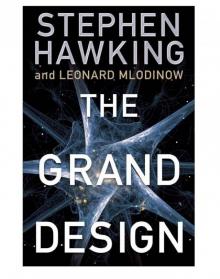 The Grand Design
The Grand Design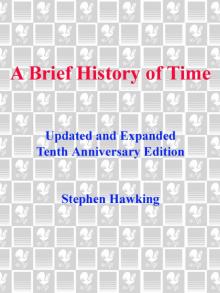 A Brief History of Time
A Brief History of Time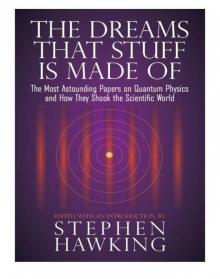 The Dreams That Stuff is Made of
The Dreams That Stuff is Made of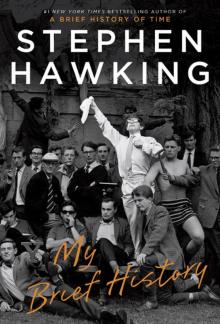 My Brief History
My Brief History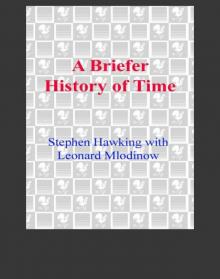 A Briefer History of Time
A Briefer History of Time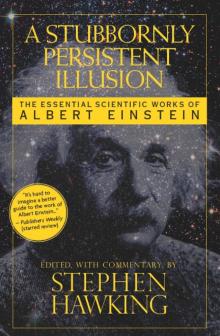 A Stubbornly Persistent Illusion
A Stubbornly Persistent Illusion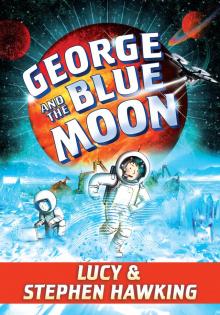 George and the Blue Moon
George and the Blue Moon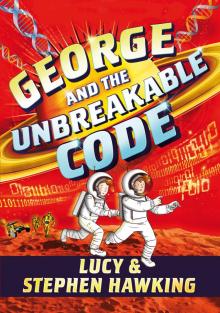 George and the Unbreakable Code
George and the Unbreakable Code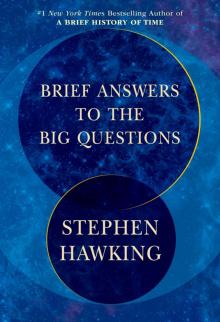 Brief Answers to the Big Questions
Brief Answers to the Big Questions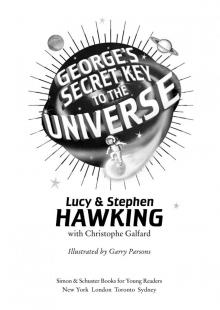 George's Secret Key to the Universe
George's Secret Key to the Universe